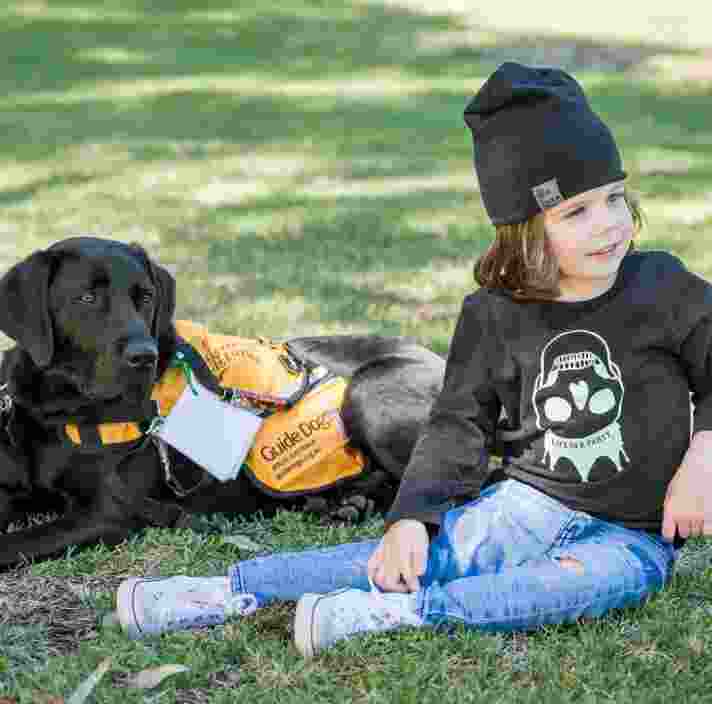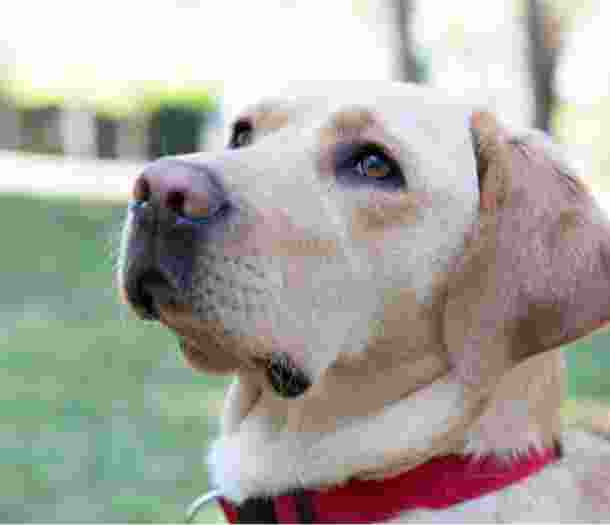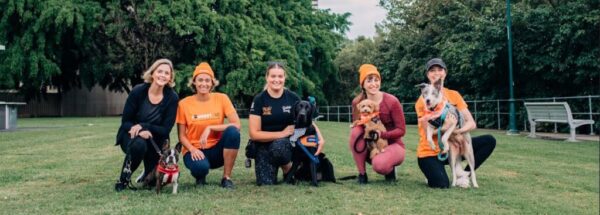What are Autism Assistance Dogs?
Creating a sense of calm and assurance.
If you have a young child with autism, bringing a pet into your home or out into the community on social outings may seem like a stressful addition to your circumstances. In fact, an Autism Assistance Dog can provide a sense of calm and assurance: both for you and your child.
Autism Assistance Dogs are carefully trained to provide independence, peace of mind, and to support your child to feel comfortable, safe, and confident in the community.
Along with a loyal and thoroughly trained Autism Assistance Dog for your child, the program includes training and support for you as parents.

What are the benefits?
Experience the joy of independence and inclusion.
During social outings in the community, Autism Assistance Dogs are connected to your child by a therapeutic attachment and connected with you through a standard lead.
In any event where your child might wander off or run away, the dog is trained to calmly lay down and act as a supporting anchor. With the added time, you can intervene and handle the situation.
Beyond their stabilising support, Autism Assistance Dogs promote positive social interactions and support your child to develop skills for participating in the community.
Families living with Autism Assistance Dogs have also reported:
- improved quality and quantity of sleep as children may wake less with an Autism Assistance Dog sleeping in their room
- positive changes in behaviour
- children with autism feeling more comfortable in general.
Who is eligible for an Autism Assistance Dog?
Autism Assistance Dogs are trained to support certain children and families.
Autism Assistance Dogs are trained to partner with children who:
- are aged between three and eight years
- have a confirmed diagnosis of autism
- experience severe difficulty with verbal and non-verbal communication skills
- have a severe impairment in functioning
- have limited-to-nil social interaction ability
- have severely repetitive behaviours
- have severe and frequent tendencies to flee certain situations.
There are some additional criteria for you as parents or carers, which we can discuss throughout your application.
Please note the program is currently only offered in South Australia. You can contact your local Guide Dogs to find out about other Therapy Dog programs that may be of interest.
Additional details and considerations
Some training and preparation is required for a successful partnership.
Once accepted into the program, one or both parents must commit to a five-day in-house course at a local Guide Dogs Centre. A subsequent three-week intensive training program is conducted, with your child, at your home.
Autism Assistance Dogs can go anywhere and have the same legal access rights as Guide Dogs. Autism Assistance Dogs are clearly identified by their body coats, which provide awareness of the dog’s special circumstances and support public access and inclusion.

Ready to continue?
Seems like you have filled this form earlier. Let’s pick up where you left off.


